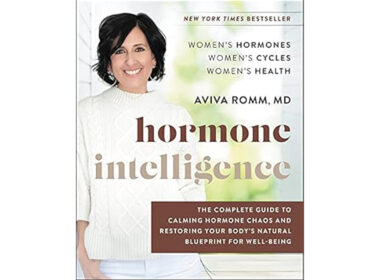The more information available about fertility awareness methods, the better—but only if it’s accurate! As more women learn about their family planning options and choose to use natural birth control, it’s important to make sure information is clear and straightforward. This is why it’s worth breaking down an article on natural birth control published earlier this year on the popular health website VeryWell Health.
What VeryWell Health gets right about natural birth control
The natural birth control article from VeryWell Health correctly states that there are many good reasons to use natural birth control methods (among which they include fertility awareness), including health concerns, a desire to be more natural, and religious beliefs.
#1 No side effects with natural birth control
VeryWell Health correctly points out that unlike hormonal contraception, natural birth control options do not expose the user to harmful chemicals, toxins, or hormones. Neither do they come with side effects like headaches, nausea, weight gain, and vaginal yeast infections, or even more dangerous ones like increased risks for blood clots, strokes, and pulmonary embolisms.
#2 Better understanding of your fertility with natural birth control
VeryWell Health also correctly states that natural birth control methods have no effect on hormone levels, they increase personal understanding of the menstrual cycle and days of fertility, and help those trying to conceive to get pregnant.
#3 No ethical concerns with natural birth control
Finally, although VeryWell Health doesn’t spell this out for their readers, for women concerned about the possibility of breakthrough ovulation on birth control and the chance that it could prevent the implantation of a fertilized egg (zygote), natural birth control is an excellent option that carries no risk of this happening. This is perhaps what they mean when they indicate that some women choose natural methods for “religious beliefs.”
What VeryWell Health gets wrong about natural birth control
Perhaps the biggest mistake made by the VeryWell Health article is in lumping together biomarker-based methods of fertility awareness (i.e., methods that observe and track cervical mucus and/or basal body temperature) with “cycle tracking,” “breastfeeding,” and “withdrawal.”
It seems that they’re simply trying to distinguish between family planning methods that use hormones or devices by calling everything else “natural birth control,” but doing so lacks the nuance necessary to ensure that women have accurate information about fertility awareness methods (FAMs), in particular.
#1 Thinking cycle tracking is an effective form of natural birth control
For example, while cycle tracking apps are common, they are not particularly effective at preventing pregnancy, as simply tracking one’s period does not provide real-time information about fertility (as fertility awareness methods do). These apps use data from the last six menstrual cycles to work backwards and estimate when the window of fertility occurred. They then use this to speculate when fertility will occur in future cycles.
Sounds fine, until you realize that this is simply a technological version of the rhythm method. The rhythm method, invented in the 1920s, was an early and ineffective attempt at estimating a woman’s fertile window. It could only be used for regular cycles and still held a 24% failure rate. Thankfully, modern, evidence based FAMs are much more advanced than the rhythm method or cycle tracking apps, and can be used by women with all types of cycles! This distinction between FAMs and other “natural birth control methods” is crucial–and one that VeryWell Health largely ignores.
#2 Treating condom use as compatible with fertility awareness
The article also states that couples can identify the window of fertility through natural birth control methods and then prevent pregnancy by using barrier methods, like condoms, during that time. But the success rate of preventing pregnancy is only as strong as the weakest method used and, in this scenario, that would be condoms.
While FAMs can be as effective as 99.5% in avoiding pregnancy, condoms are only about 87% effective. This means that condom use during the fertile window would actually reduce the effectiveness of a FAM, not increase it. The best way to successfully avoid pregnancy is to abstain from genital contact during the fertile window. Thankfully, fertility awareness methods can help couples narrow down the days in which abstinence is necessary.
#3 Misstating the efficacy of fertility awareness methods
On that note, the article misleadingly states that “out of every 100 couples who practice the natural birth control method, anywhere from 2 to 23 will get pregnant.” Again, this can’t be emphasized enough: there is not one combined “natural birth control method,” and in lumping all of these methods or practices together, it obscures the truth that women deserve about highly effective FAMs, in particular.
Just as statistics about the various forms of hormonal contraception are never lumped together (instead, sites like VeryWell Health give the effectiveness rates for IUDs, pills, implants, etc. individually), natural birth control methods’ statistics shouldn’t be, either. There are many different methods of fertility awareness, for example, and each has its own instructions, requirements, and rates of effectiveness (all of which can be found in “The Ultimate Guide to the Effectiveness of Evidence-Based FAMs”).
With the Sympto-Thermal Method boasting a perfect use rate of 0.4%, and a typical use rate of 1.8% (just to name one FAM!), it is deceiving to lump in things like cycle tracking apps and withdrawal, leading readers to believe that these represent the best of natural family planning options.
#4 Implying hormonal birth control has more “advantages” than natural birth control
VeryWell Health also suggests that natural birth control options do not have the same “advantages” as hormonal birth control. Let’s take a look at some of those perceived advantages: convenient and safe, sexual spontaneity, lighter bleeding, painless periods, and the possibility of a reduced risk of certain cancers.
VeryWell Health does a great disservice to women in failing to point out all the risks associated with hormonal birth control, neglecting to mention breast or cervical cancer risks or mental health risks entirely. It also falsely paints hormonal birth control’s ability to lessen menstrual cramps and lighten periods as an unmitigated benefit.
However, during the reproductive years, the female body functions at its best when experiencing a natural rise and fall of reproductive hormones, resulting in cycles of ovulation and menstruation. Instead of optimizing this process, hormonal contraception shuts it down. Yes, this does prevent pregnancy and stop symptoms of an unhealthy cycle, but it does nothing to improve the health of the woman or her reproductive system.
Fertility awareness methods are not only as effective and (far) safer than hormonal birth control, they are often used by restorative reproductive medical providers to diagnose and treat the underlying medical conditions causing troubling cycle issues. (They also have some pretty great relationship benefits.) Talk about advantages!
#5 Implying birth control is a solution for abusive situations
One of the potential downsides of natural birth control that the article mentions is that there are times when a woman “cannot abstain from sex.” It is critical to point out that no woman should ever be coerced, forced, or otherwise dictated to about when she can or must have sex.
If a woman is unable to use natural birth control because she does not have a say over when she has sex, her relationship is an abusive one–and birth control does nothing to stop the abuse. In fact, it may actually aid and abet it. There are professional resources available to individuals who find themselves in these situations:
Domestic Violence Support | National Domestic Violence Hotline
Resources by state on violence against women
#6 Stating whole swaths of women shouldn’t use fertility awareness
Finally, the article lists scenarios in which natural birth control is not a viable option for preventing pregnancy, but this list is simply inaccurate. As mentioned, natural birth control is not one specific method, but a category of methods. There is an effective form of fertility awareness for every woman, depending on what her specific goal, reproductive stage, or cycle health concerns are.
Contrary to what VeryWell Health wants its readers to believe, the following categories of women can use fertility awareness methods successfully (and you can click the links to read more about each of them!):
- just starting to have cycles,
- approaching menopause,
- experiencing bleeding in between periods (i.e., spotting or breakthrough bleeding),
- regular or irregular cycles,
- stopping hormonal contraception,
- taking medications that affect fertility,
- Permanently or seriously avoiding pregnancy,
- postpartum, or
- with serious health concerns related to pregnancy
The bottom line
Women want to investigate natural birth control options for many reasons, be it for health or moral concerns (or both!). In order to make informed decisions about these natural alternatives to hormonal birth control, though, it’s important to understand the different methods of fertility awareness—and that not all forms of “natural birth control” are equally effective at helping couples avoid pregnancy. When a fertility awareness method is used correctly, it can be extremely effective, and help women avoid the negative side effects associated with hormonal birth control. Knowing each method’s approach, instructions, and effectiveness can help women find the best fit for their lifestyles and goals.
This article was updated on 8/23/2024 to rephrase the sentence “Thankfully, fertility awareness methods make it easy to pinpoint the only days in which this is necessary,” to “Thankfully, fertility awareness methods can help couples narrow down the days in which abstinence is necessary.”








“Thankfully, fertility awareness methods make it easy to pinpoint the only days in which this (abstinence) is necessary. ”
This is inaccurate. FAMs don’t “pinpoint” the days of fertility, i they narrow them down, but pinpoint is an over statement. As someone who has somewhat irregular cycles and has much of my life and has used a couple of different FAM methods, abstinence is required for at least half of my cycle. While I think FAMs are great, this kind of overstatement of their advantages are misleading and harmful.
Thank you for your comment, Jessica. We like the way you phrased this (i.e., “narrows them down”) and will update the article accordingly.